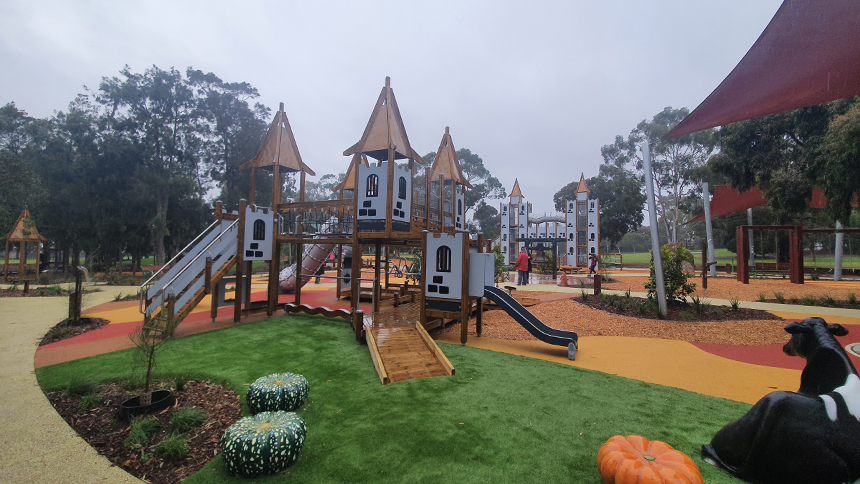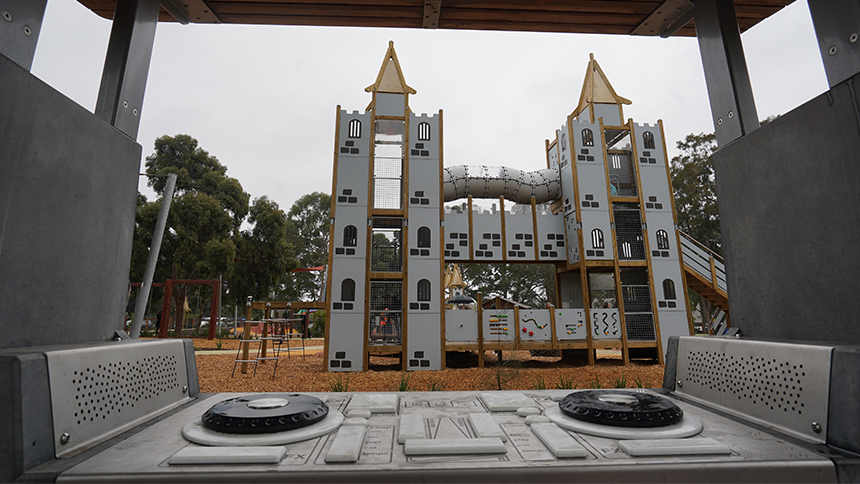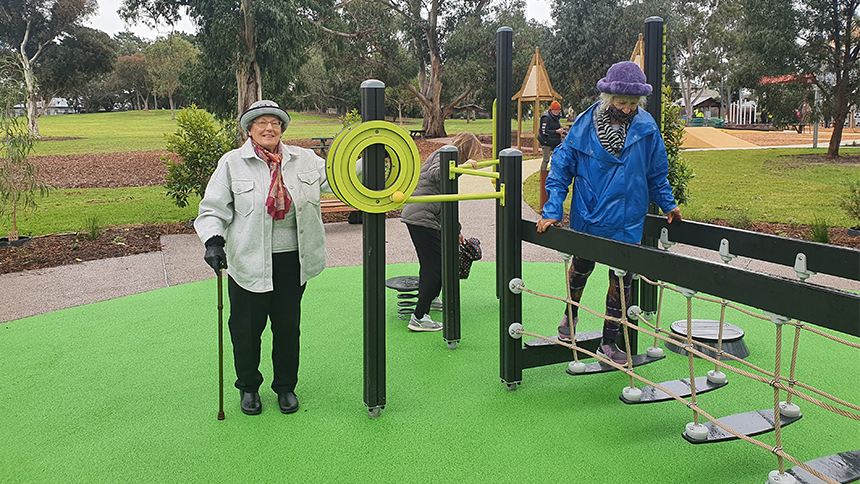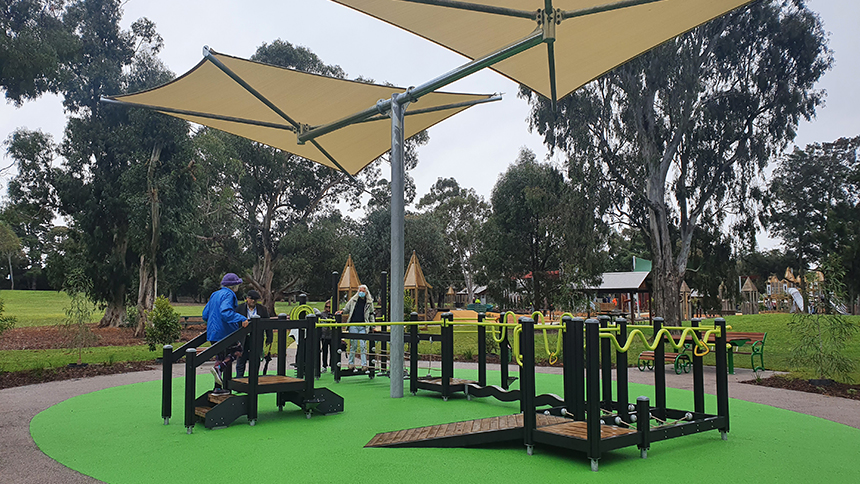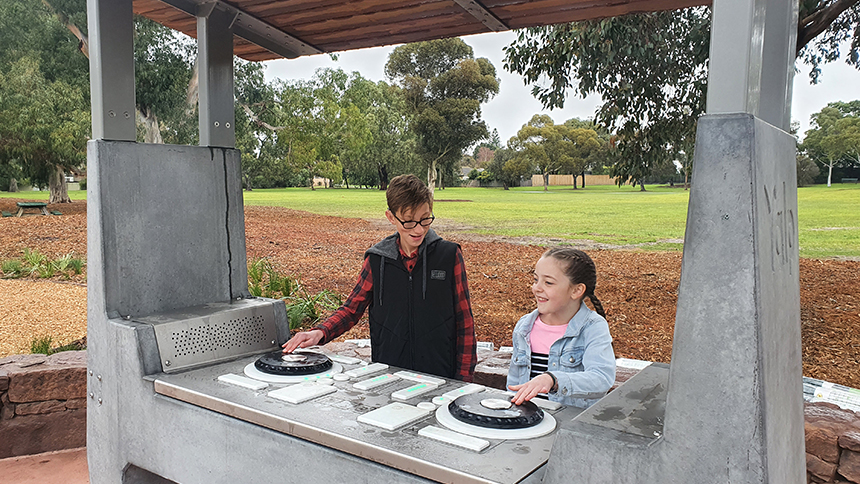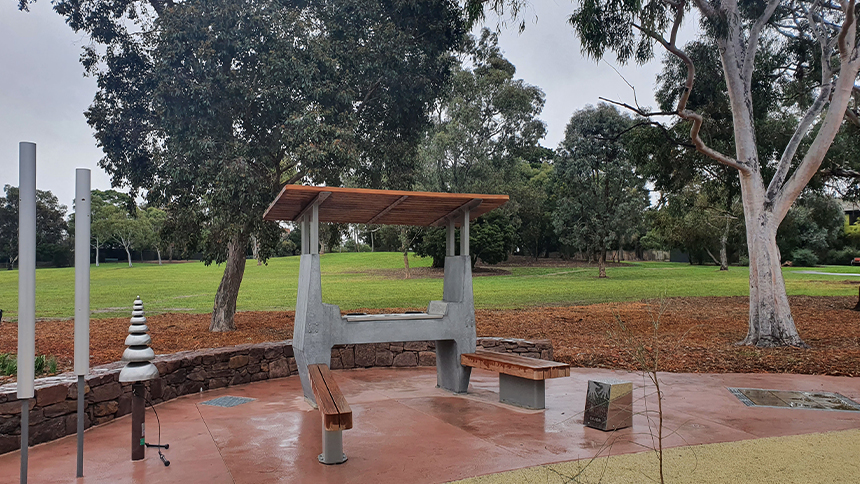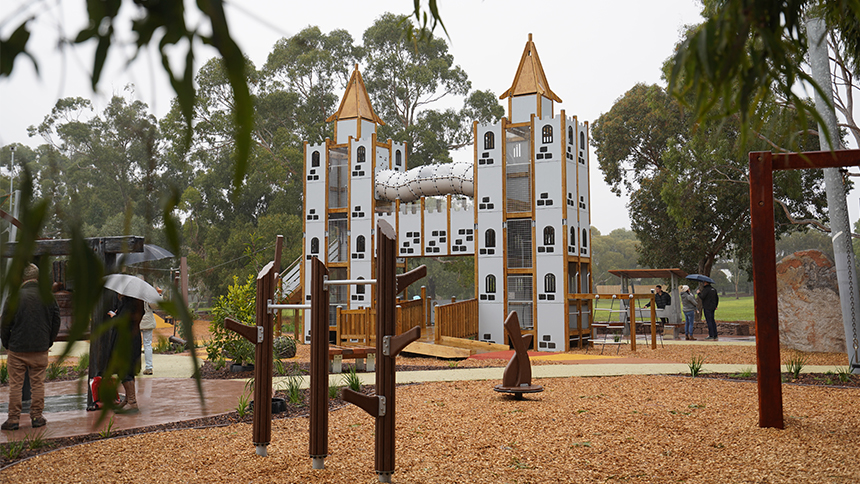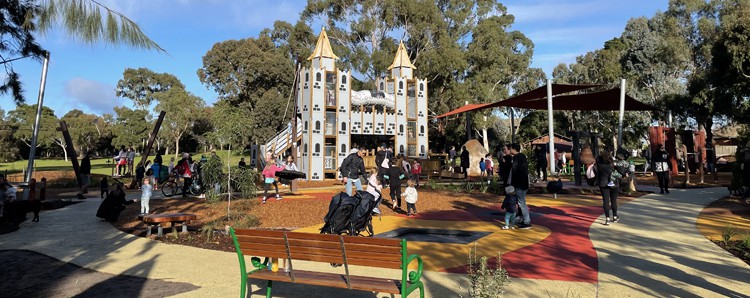
Outdoor play equipment makes it possible for children to be physically active and have contact with their peers. It can help them to develop empathy and tolerance through sharing and enhances creativity and imagination, not to mention decreases their sense of loneliness and fear of social interaction. When given the opportunity, most children love the thrill of physical and explorative play and the joy of playing with others.
Why then are not all playgrounds created equal? People with disabilities are too often underrepresented in outdoor leisure activities due to a lack of accessibility and inclusivity – two crucial pillars of effective design that are often mistaken for having the same outcome.
Inclusive design considers as many people’s needs and aspirations as possible, whereas accessibility involves making deliberate considerations for people with disabilities to aid access and compliance. Using both principles and showing consideration for all users means being able to introduce equality and understanding to outdoor recreation.
Thomas Street Reserve in Hampton, Victoria, is the first inclusive playspace in Bayside. The new space repurposes the ‘fort’ theme from the original 30-year-old park after ongoing consultation with the local community, which designer Ric McConaghy said was a crucial element of the pioneering project.
“There was a community reference group and we met regularly throughout the process. I went to local schools and to schools for children with disabilities and did consultations and workshops with the staff and students,” explained McConaghy.
“The design has evolved through a very collaborative process, not just with the community and Council but also with contractors, suppliers, artists and fabricators. The trust of the client and community was fantastic and immeasurable in terms of the outcome,” he said.
Thomas Street Reserve now harnesses a medieval theme, complete with two castles, a sand pit and eye-catching artwork. All the traditional childhood favourites remain, including swings, slides, slippery dips and a flying fox. Less traditional is the range of activities and equipment that all children can enjoy.
The space is equipped with in-ground wheelchair trampolines, a rocking boat called a Swayfun that can accommodate a person in a wheelchair with their friends, and a ground level made up of discovery, communication and dexterity elements, and with significant natural materials.
Michelle Herbut is the Senior Business Development Manager at Lark Industries, a leading Australian supplier of play and exercise equipment. With a focus on sustainability and world-class design, Lark Industries have been reimagining outdoor recreation spaces across Australia since 2009. Their projects, which include the Pentridge children’s lawn in Coburg and an internet-connected fun zone at the University of Queensland in St Lucia, are changing the visual landscapes of local communities and promoting movement for physical and mental wellbeing.
Herbut said the Thomas Street project in Bayside is all about inclusion, not only in terms of physical ability but also for different age groups and demographics that exist within the community.
“Ric approached us with a brief after a long period of consultation with the community. We decided to use off-the-shelf products to keep costs down for the client and to ensure different elements or materials could be easily replaced when needed,” Herbut explained.
“Our plan is to keep working with inclusive design in the future because as a company we can and want to cater to a diverse range of client needs.”
Lark Industries worked with the National Ageing Research Institute to create a senior-specific exercise space at the Thomas Street Reserve that would provide opportunities for older members of the community to engage in safe physical and social activities.
The benefits of senior residents getting outdoors are obvious – it not only assists with their mental health and wellbeing but also means they are able to be more active and independent for longer. Over time, this access to more age-friendly active outdoor spaces will help to prevent falls and take pressure off Australia’s health systems.
Most notably, the specialised play and exercise equipment at the Thomas Street Reserve is intergenerational – senior residents can utilise their own exercise unit to help build strength and mobility in their joints while their grandchildren or other young members of their community play alongside them.
The interactive DJ Fono space is made up of custom benches that provide an area for users to hang out and listen to music, an idea that aims to involve as many young people as possible. There is even a dedicated Parkour area to test the agility of older children and teenagers.
“The interactives are a new product to the Australian market, and they can add a lot of value to a playspace,” Herbut said.
“People sometimes think of interactives as too complex for an outdoor space due to the use of power, but really they are such important additions. DJ Fono was created by one of our partners, Yalp Interactive, and it’s a great tool to cater for older children, who can be harder to involve in a playspace.”
Lark Industries also supplied the two castles that are iconic to the new Bayside playspace. McConaghy, in conjunction with landscape architect Justin Staggard, designed Eyrie, which is the tallest castle and a fully customised unit from Lark’s partner Lappset Group.
“I don’t want kids coming in and feeling like it’s not theirs. I really wanted it to be a place that had a sense of wonder and excitement, where everybody feels welcome and has the opportunity to engage,” McConaghy explained.
“We gave the community a lot of options and the ones from Lark resonated, which is great.”
Andrew Shannon, the Inclusion Officer at Bayside City Council, said Thomas Street Reserve is the first one the council has set about building with children who have disabilities front of mind.
“This playspace was about making sure that everyone, regardless of ability, could have the opportunity to play. Not everyone will be able to do everything and not everyone will do everything the same way, but there will be a range of things for everybody to do,” Shannon explained.
“We know that there are lots of kids in our municipality – every municipality – who have some form of a disability, and everyone has a growing mind and body, so it’s really important that we provide opportunities for everyone to do that play and exploration,” he said.
Universal design implies an inclusive approach to public planning that expands beyond traditional playspace boundaries, which was the vision of the Bayside City Council and the mission of Ric McConaghy and Lark Industries when designing and delivering a space that will welcome and encourage an entire community.
The Thomas Street Reserve Playspace opened to the public on Friday, 25 June.
For more information on the project, click here.
